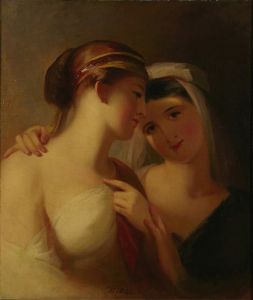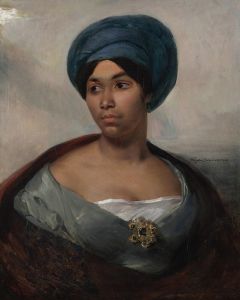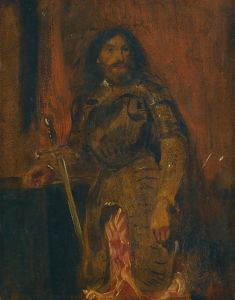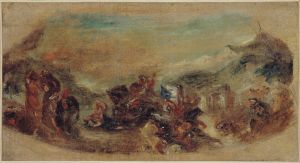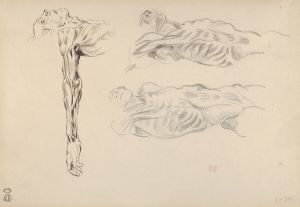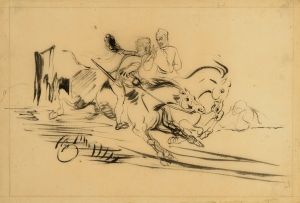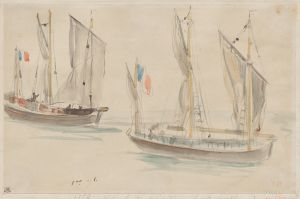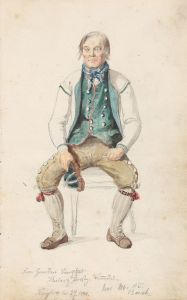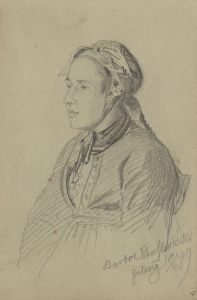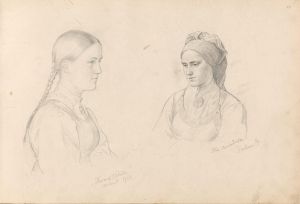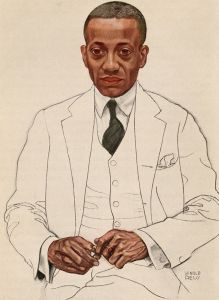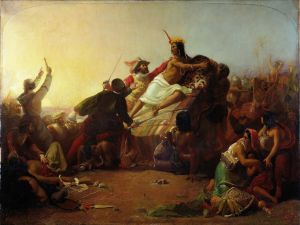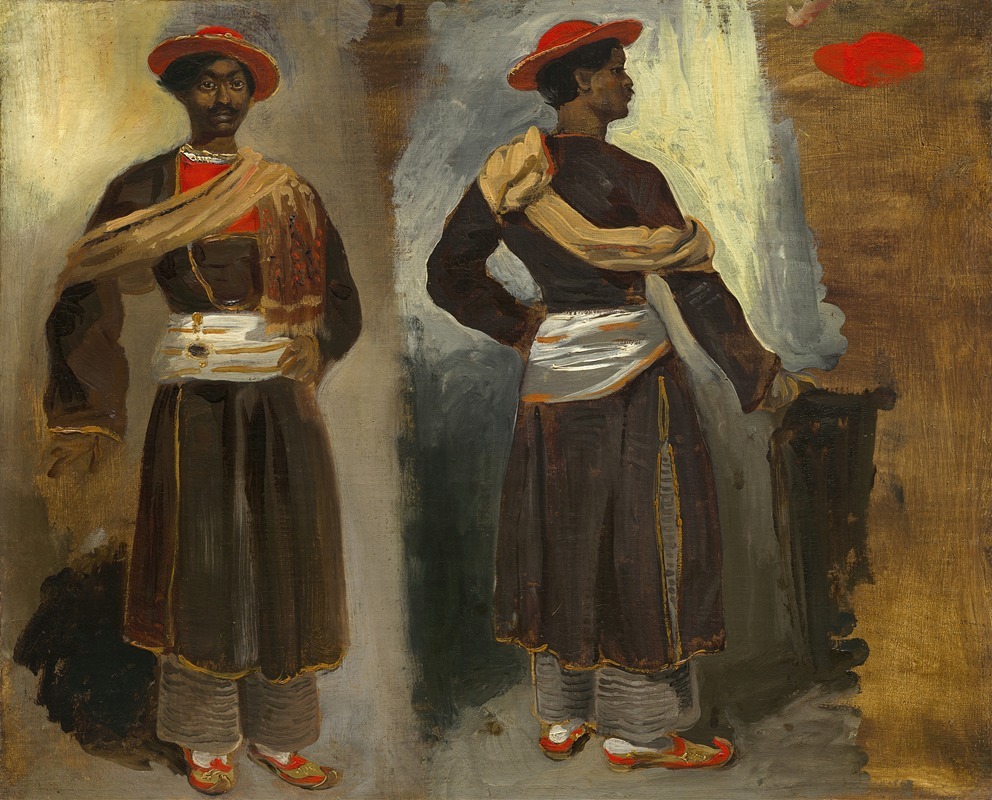
Two Studies of a Standing Indian from Calcutta
A hand-painted replica of Eugène Delacroix’s masterpiece Two Studies of a Standing Indian from Calcutta, meticulously crafted by professional artists to capture the true essence of the original. Each piece is created with museum-quality canvas and rare mineral pigments, carefully painted by experienced artists with delicate brushstrokes and rich, layered colors to perfectly recreate the texture of the original artwork. Unlike machine-printed reproductions, this hand-painted version brings the painting to life, infused with the artist’s emotions and skill in every stroke. Whether for personal collection or home decoration, it instantly elevates the artistic atmosphere of any space.
"Two Studies of a Standing Indian from Calcutta" is a drawing created by the renowned French Romantic artist Eugène Delacroix. Delacroix, born on April 26, 1798, and passing on August 13, 1863, is celebrated for his expressive brushstrokes and his fascination with exotic subjects, which often drew from his travels and the broader Romantic interest in the "Orient."
This particular work, "Two Studies of a Standing Indian from Calcutta," showcases Delacroix's interest in capturing the human form and his fascination with the diverse cultures of the world. The drawing features two detailed studies of an Indian man from Calcutta, now known as Kolkata, a major cultural and historical city in India. The studies are rendered with meticulous attention to the subject's attire and posture, reflecting Delacroix's keen observational skills and his ability to convey the essence of his subjects through his art.
Delacroix's interest in Indian subjects can be traced back to the broader 19th-century European fascination with the East, often referred to as Orientalism. This movement was characterized by a romanticized and sometimes stereotypical portrayal of Eastern cultures, which were seen as exotic and mysterious by many Western artists and intellectuals. Delacroix, however, was known for his more nuanced and respectful approach to his subjects, often seeking to understand and accurately represent the people and cultures he depicted.
The drawing is executed in pencil and ink, mediums that Delacroix frequently employed for his studies and preparatory sketches. These studies were often used as references for larger, more finished works, allowing Delacroix to experiment with composition, anatomy, and expression. The choice of medium and the detailed execution of the studies suggest that Delacroix was deeply engaged with his subject, aiming to capture not just the physical appearance but also the character and presence of the Indian man.
"Two Studies of a Standing Indian from Calcutta" is a testament to Delacroix's skill as a draftsman and his interest in the human condition. The drawing provides insight into the artist's process and his ability to convey a sense of life and movement through his work. It also reflects the broader cultural exchanges of the 19th century, as European artists like Delacroix sought to explore and understand the diverse cultures beyond their own borders.
Today, Delacroix is remembered as one of the leading figures of the Romantic movement, and his works continue to be celebrated for their emotional intensity and technical mastery. "Two Studies of a Standing Indian from Calcutta" remains an important piece within his oeuvre, highlighting his ability to blend careful observation with artistic expression. The drawing is a valuable example of Delacroix's approach to art, combining his interest in exotic subjects with his dedication to capturing the human spirit.





